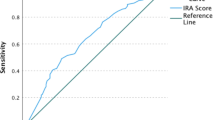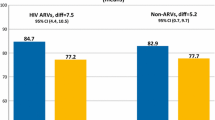Abstract
The purpose of this paper is to describe electronic monitoring device (EMD) (e.g., MEMS caps) use among HIV-infected adults enrolled in a randomized clinical trial and to make explicit some of the benefits and caveats of using electronic monitoring device technology. This is a descriptive, exploratory study of EMD use among 128 HIV-infected adults treated with at least three antiretroviral agents. Thirty-six percent of the sample admitted that they did not use the EMD consistently. Forty-one percent of the subjects reported taking out more than one dose at a time and 26% reported opening the EMD but not taking the medication. Special subject-related issues accounted for only a small percentage of all reported problems with EMD use (e.g., transient housing, incarceration, substance abuse relapse and drug treatment). Results of this study suggest that EMDs may underestimate antiretroviral adherence among HIV-infected adults. Recommendations for improving EMD data quality are presented.
Similar content being viewed by others
References
Bangsberg, D. R., Hecht, F. M., Charlebois, E. D., Chesney, M., and Moss, A. (2001). Comparing objective measures of adherence to HIV antiretroviral therapy: Electronic medication monitors and unannounced pill counts. AIDS and Behavior, 5, 275–281.
Bangsberg, D. R., Hecht F. M., Charlebois, E. D., Zolopa, A. R., Holodniy, M., Sheiner, L., Bamberger, J. D., Chesney, M. A., and Moss, A. (2000). Adherence to protease inhibitors, HIV-1 viral load and development of drug resistance in an indigent population. AIDS, 14, 357–366.
Burney, K. D., Krishnan, K., Ruffin, M. T., Zhang, D., and Brenner, D. E. (1996). Adherence to single daily dose of aspirin in a chemoprevention trial: An evaluation of self-report and microelectronic monitoring. Archives of Family Medicine, 5, 297–300.
Cramer, J. A., Mattson, R. H., Prevey, M. L., Scheyer, R. D., and Ouellette, V. L. (1989). How often is medication taken as prescribed? A novel assessment technique. JAMS, 261, 3273–3277.
Cramer, J. A., Scheyer, R. D., and Mattson, R. H. (1990). Compliance declines between clinic visits. Archives of Internal Medicine, 150, 1377–1378.
Dunbar-Jacob, J., Erlen, J. A., Schlenk, E. A., Ryan, C. M., Sereika, S. M., and Doswell, W. M. (2000). Adherence in Chronic Disease. Annual Review of Nursing Research, 18, 48–90.
Farmer, K. C. (1999). Methods for measuring and monitoring medication regimen adherence in clinical trials and clinical practice. Clinical Therapeutics, 21, 1074–1090.
Frick, P. A., Gal, P., Lane, T. W., and Sewell, P. C. (1998). Antiretroviral medication compliance in patients with AIDS. AIDS Patient Care and STDs, 12, 463–470.
Jonsson, E. N., Wade, J. R., Almqvist, G., and Karlsson, M. O. (1997). Discrimination between rival dosing histories. Pharmaceutical Research, 14, 984–991.
Liu, H., Golin, C. E., Miller, L. G., Hays, R. D., Beck, C. K., Sanandaji, S., Christian, J., Maldonado, T., Duran, D., Kaplan, A. H., and Wenger, N. S. (2001). A comparison study of multiple measures of adherence to HIV protease inhibitors. Annals of Internal Medicine, 134, 968–977.
Lyketsos, C. G., Hoover, D. R., Guccione, M., Dew, M. A., Wesch, J. E., Bing, E. G., and Treisman, G. L. (1996). Changes in depressive symptoms as AIDS develops. American Journal of Psychiatry, 153, 1430–1437.
Matsui, D., Hermann, C., Klein, J., Berkovitch, M., Olivieri, N., and Koren, G. (1994). Critical comparison of novel and existing methods of compliance assessment during a clinical trial of an oral iron chelator. Journal of Clinical Pharmacology, 34, 944–949.
McClure, J. B., Catz, S. L., Prejean, J., Brantley, P. J., and Jones, G. N. (1996). Factors associated with depression in a heterogeneous HIV-infected sample. Journal of Psychosomatic Research, 40, 407–415.
Miller, L. G., Liu, H., Hays, R. D., Golin, C. E., Beck, C. K., Asch, S. M., Ma, Y., Kaplan, A. H., and Wenger, N. S. (2002). How well do clinicians estimate patients’ adherence to combination antiretroviral therapy? Journal of General Internal Medicine, 17, 1–11.
Olivieri, N., Matsui, D., Hermann, C., and Koren, G. (1991). Compliance assessed by the medication event monitoring system. Archives of Disease in Childhood, 66, 1399–1402.
Paes, A. H., Bakker, A., and Soe-Agnie, C. J. (1998). Measurement of patient compliance. Pharmacy World & Science, 20, 73–77.
Radloff, L. S. (1977). The CES-D Scale: A self-report depression scale for research in the general population. Applied Psychological Measurement, 1, 385–401.
Samet, J. H., Sullivan, L. M., Traphagen, E. T., and Ickovics, J. R. (2001). Measuring adherence among HIV-infected persons: Is MEMS consummate technology? AIDS and Behavior, 5, 21–29.
Schwed, A., Fallab, C. L., Burnier, M., Waeber, B., Kappenberger, L., Burnand, B., and Darioli, R. (1999). Electronic monitoring of compliance to lipid-lowering therapy in clinical practice. Journal of Clinical Pharmacology, 39, 402–409.
Sereika, S. M., and Dunbar-Jacob, J. (2000). Analysis of electronic event monitored adherence. In L. Burke and I. Ockene (Eds.), Compliance in healthcare research (pp. 139–162). Armonk, NY: Futurea Publishing.
Spilker, B. (1991). Methods of assessing and improving patient compliance in clinical trials. In J. A. Cramer and B. Spilker (Eds.), Patient compliance in medical practice and clinical trials (pp. 37–56). New York: Raven Press.
Straka, R. J., Fish, J. T., Benson, S. R., and Suh, J. T. (1997). Patient self-reporting of compliance does not correspond with electronic monitoring: An evaluation using isosorbide dinitrate as a model drug. Pharmacotherapy, 17, 126–132.
Turner, B. J., and Hecht, F. M. (2001). Improving on a coin toss to predict patient adherence to medications. Annals of Internal Medicine, 134, 1004–1006.
Wagner, G. J., and Rabkin, J. G. (2000). Measuring medication adherence: Are missed doses reported more accurately then perfect adherence? AIDS Care, 12, 405–408.
Author information
Authors and Affiliations
Corresponding author
Rights and permissions
About this article
Cite this article
Bova, C.A., Fennie, K.P., Knafl, G.J. et al. Use of Electronic Monitoring Devices to Measure Antiretroviral Adherence: Practical Considerations. AIDS Behav 9, 103–110 (2005). https://doi.org/10.1007/s10461-005-1685-0
Received:
Revised:
Accepted:
Issue Date:
DOI: https://doi.org/10.1007/s10461-005-1685-0




